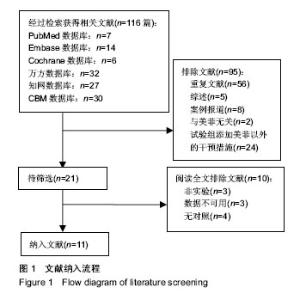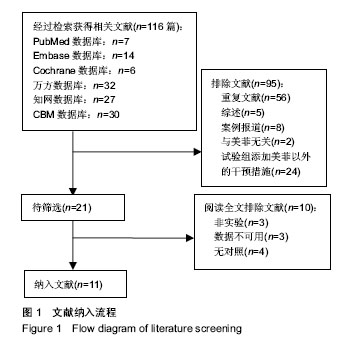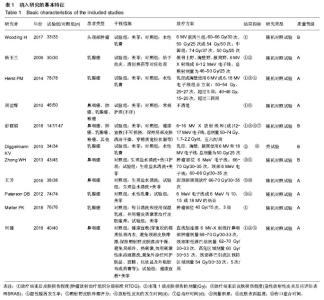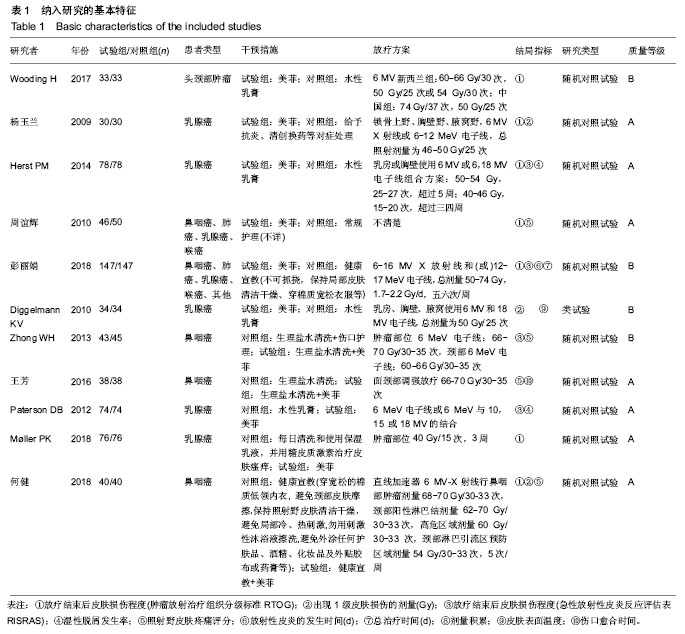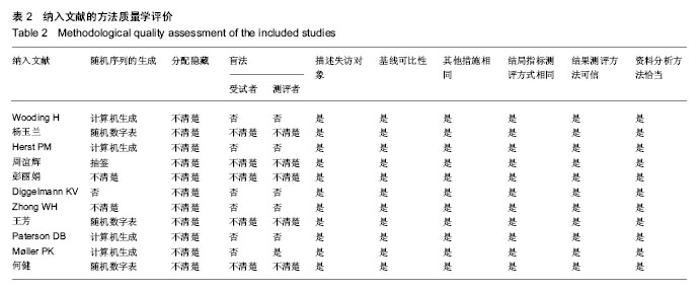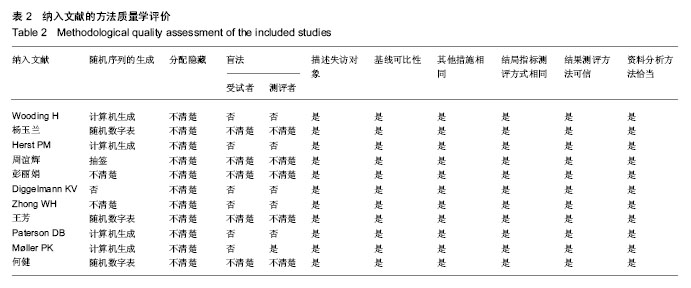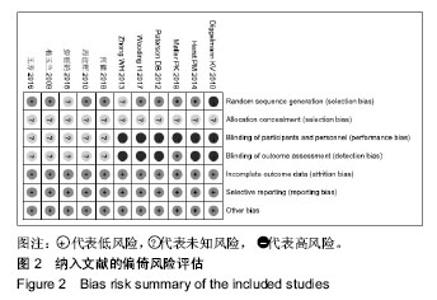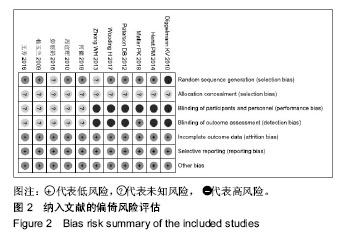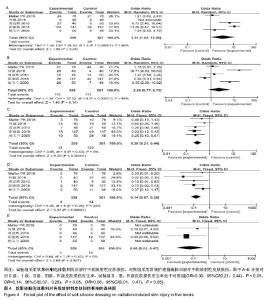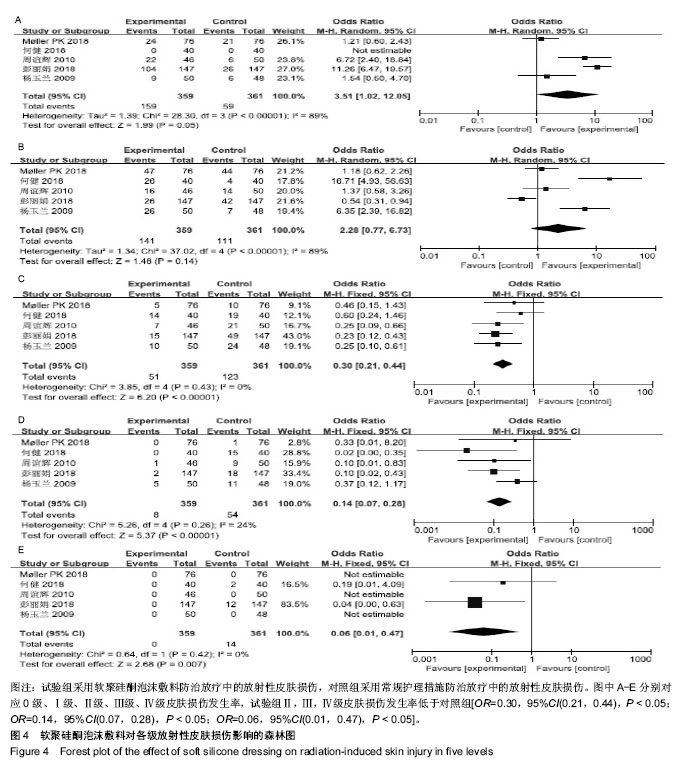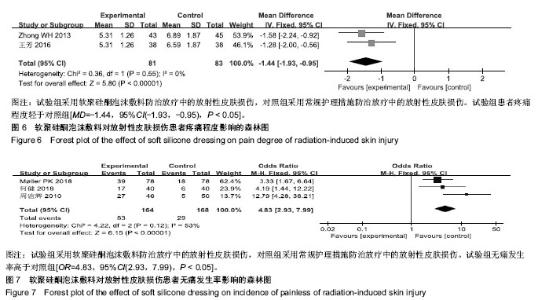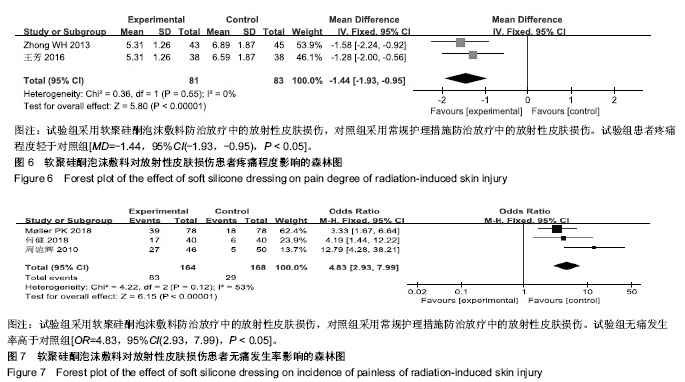| [1]陈三妹,孙玫,蒋芬,等.新型软聚硅酮泡沫敷料治疗鼻咽癌患者颈部放射性湿性脱皮的疗效及安全性观察[J].中国全科医学, 2012, 15(32):3796-3798. [2]Häfner MF, Fetzner L, Hassel JC,et al.Prophylaxis of acute radiation dermatitis with an innovative FDA-approved two-step skin care system in a patient with head and neck cancer undergoing a platin-based radiochemotherapy: a case report and review of the literature.Dermatology. 2013; 227(2):171-174.[3]Cabezón-Gutiérrez L,Khosravi-Shahi P,Escobar-Álvarez Y.Management of derm-atitis in patients with locally advanced squamous cell carcinoma of the head and neck receiving cetuximab and radiotherapy.Oral Oncol.2012;48(4):293-297.[4]Bensadoun RJ,Humbert P,Krutman J,et al. Daily baseline skin care in the prevention, treatment, and supportive care of skin toxicity in oncology patients: recommendations from a multinational expert panel.Cancer Manag Res. 2013;5: 401-408. [5]黄冰,任道琼,张玲,等.美皮康银离子联合维生素B12混合液治疗放射性湿性皮炎感染创面[J].护理学杂志,2011,26(13):53-55.[6]Fernandez-Castro M,Martin-Gil B,Pena-Garcia I,et al. Effectiveness of semi-permeable dressings to treat radiation-induced skin reactions. A systematic review.Eur J Cancer Care (Engl). 2017;26(6). doi: 10.1111/ecc.12685.[7]Wooding H,Yan J,Yuan L,et al.The effect of Mepitel Film on acute radiation-induced skin reactions in head and neck cancer patients: a feasibility study.Br J Radiol. 2017;90(1081): 298-306.[8]杨玉兰.新型敷料美皮康治疗乳腺癌放射性皮肤损伤的效果观察[J].中华现代护理杂志,2009,15(10):936-937.[9]Herst PM,Bennett NC,Sutherland AE,et al.Prophylactic use of Mepitel Film prevents radiation-induced moist desquamation in an intra-patient randomised controlled clinical trial of 78 breast cancer patients.Radiother Oncol.110(1):137-143.[10]周谊辉,周秋红,屈桂荣.软聚硅酮敷料在预防放射性皮炎中的临床应用[J].中国现代医学杂志,2010,20(22):3477-3478,3482.[11]彭丽娟,范志刚.美菲超薄透明膜对放疗过程中放射性皮肤损伤的预防作用研究[J].现代中西医结合杂志, 2018,27(18):2001-2003.[12]Diggelman KV,Zytkovicz AE,Tuaine JM,et al.Mepilex Lite dressings for the management of radiation-induced erythema: a systematic inpatient controlled clinical trial.Br J Radiol. 2010;83(995):971-978.[13]Zhong WH,Tang QF,Hu LY,et al.Mepilex Lite dressings for managing acute radiation dermatitis in nasopharyngeal carcinoma patients: a systematic controlled clinical trial.Med Oncol.2013;30(4):761-767.[14]王芳,金丽芬,戴艺,等.美皮康敷料治疗鼻咽癌放疗患者放射性皮炎的效果[J].国际护理学杂志,2016,35(13):1869-1871.[15]Paterson DB,Poonam P,Bennett N,et al.Randomized intra‐patient controlled trial of mepilex lite dressings versus aqueous cream in managing radiation‐induced skin reactions postmastectomy. J Cancer Sci Ther. 2012;(4):347-356.[16]Møller PK,Olling K,Berg M,et al.Breast cancer patients report reduced sensitivity and pain using a barrier film during radiotherapy-A Danish intra-patient randomized multicentre study.Tech Innovat Patient Support Radiat Oncol. 2018;7: 20-25.[17]何健,钱立庭,高劲,等.美菲膜预防中晚期鼻咽癌急性放射性皮肤损伤的疗效观察[J].安徽医科大学学报,2018,53(6):984-987.[18]Richardson J,Smith JE,McIntyre M,et al. Aloe vera for preventing radiation-induced skin reactions: a systematic literature review.Clin Oncol(R Coll Radiol). 2005;17(6): 478-484.[19]Ferreira EB,Vasques CI,Gadia R,et al.Topical interventions to prevent acute radiation dermatitis in head and neck cancer patients: a systematic review.Support Care Cancer. 2017;25(3): 1001-1011.[20]Chan RJ,Webster J,Chung B,et al.Prevention and treatment of acute radiation-induced skin reactions: a systematic review and meta-analysis of randomized controlled trials.BMC Cancer. 2014;14(1):53-72.[21]Kumar S,Juresic E,Barton M,et al.Management of skin toxicity during radiation therapy: A review of the evidence.J Med Imaging Radiat Oncol.2010;54(3):264-279. |
